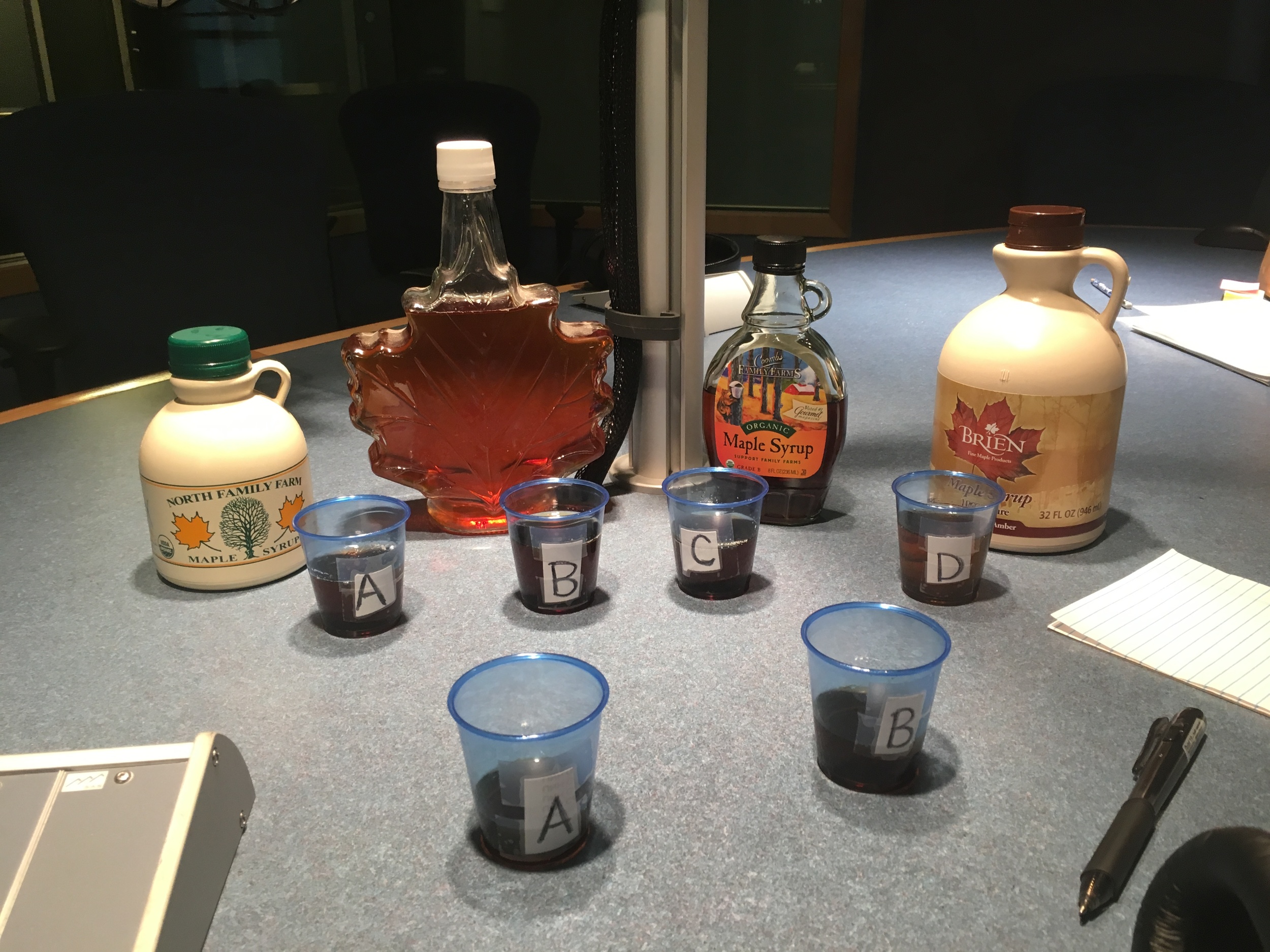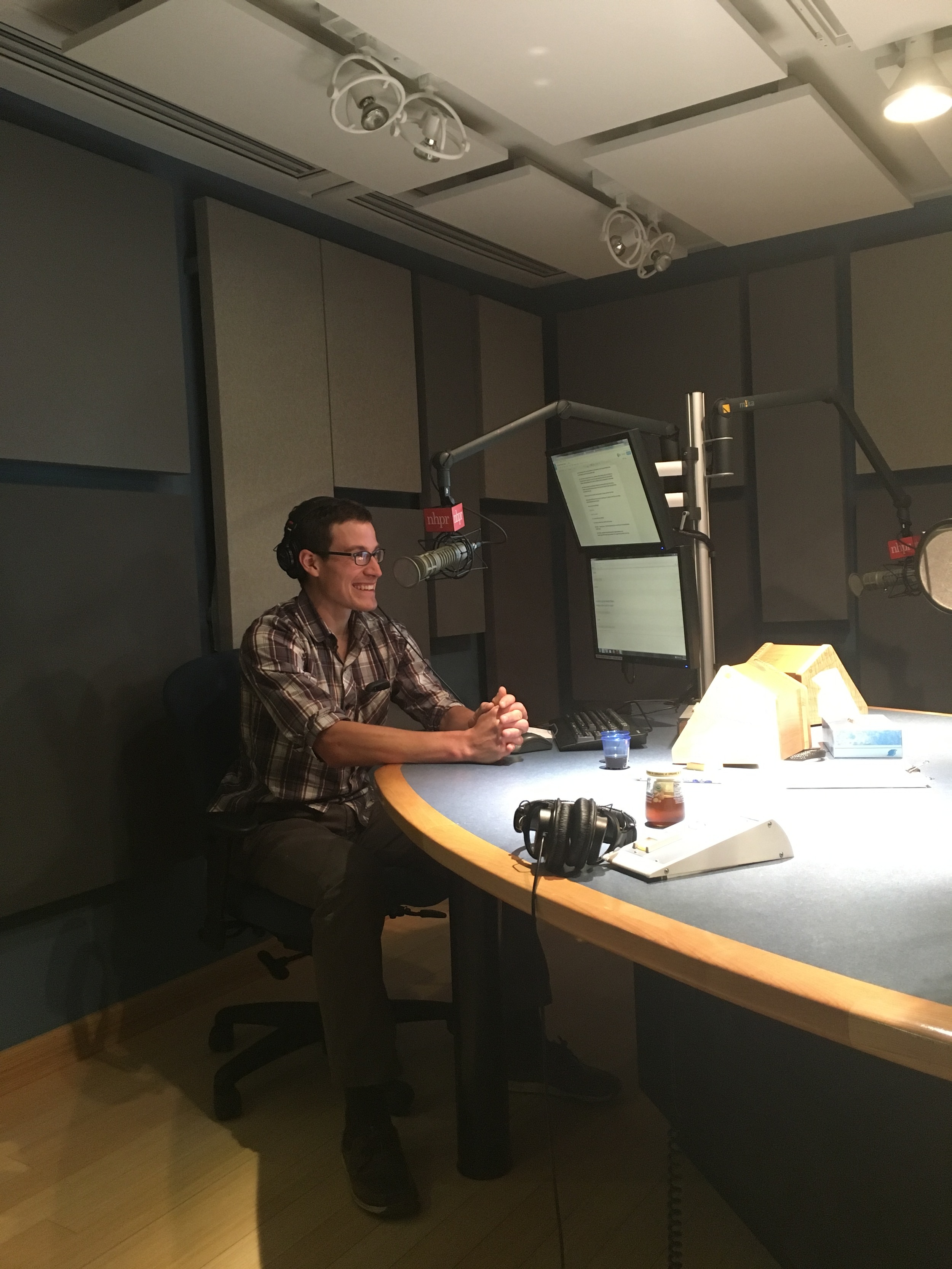Ask Sam | Syrup-titious
Whether he likes it or not, Sam has become the go-to source for all of our questions, from showing him photos of weird bugs we want him to identify, to why asparagus makes your pee smell funky, to what psi our bike tires should be. And we're not alone - everyone has questions for Sam.
If you have a question for Sam, leave him a message on the Ask Sam hotline: 603-223-2448
Mike from Poughkeepsie asks:
“During an episode of the West Wing President Bartlett gets upset when he finds out that at leadership breakfasts they’ll be serving Vermont Maple Syrup versus New Hampshire Maple Syrup. That got me thinking, can you tell the difference between maple syrups made in different places? Local pride in quality aside, is there a way to distinguish New Hampshire maple syrup from Vermont maple syrup or Canadian maple syrup?”
Well for starters, I have an “Ask Everybody Else” question: What’s with The West Wing? Why are we still talking about The West Wing?
(Disclaimer: I have not watched The West Wing. I await your outraged emails.)
(Producers note: Sam? Really? REALLY!?! *sigh*)
Now, syrup. Great Question. For starters, it’s frankly no surprise that Mr. Bartlett’s team wound up serving Vermont Maple Syrup, because most American-made syrup is from the Green Mountain state.
That said, I’m wildly and unrelentingly skeptical that anyone would be able to distinguish the state that a given batch of maple syrup came from by taste alone. And I’m not alone.
“All maple syrups produced at different sugar orchards are going to taste a little bit different,” said Jim Fadden, President of the New Hampshire maple producers association, whose family has collected sap in New Hampshire for seven generations.
But can those differences tip off a taster as to the state of origin? “In my experience the maple trees don’t recognize the borders.” Fadden doesn’t buy it.
While there are other flavor notes in syrup that you can tell between two syrups, the differences are very slight. Two syrups from two sugar shacks are dramatically more similar than two IPAs from two different brewers. As to what causes these different flavors? Bacteria, the same thing that makes your toast toast and not just hot bread, and amino acids. Do we understand how those all interact? Answers range from *shrug* to meh.
Googling around, you can find some articles stating that Vermont has a requirement that Maple Syrup have a slightly higher sugar content than other state, but when you check the rules, both states have the exactly same threshold for syrup these days -- 66.9 percent -- so while I’m not sure if that was ever true, it doesn’t seem to be anymore.
But to be really sure, we at Outside/In asked Twitter for a champion: someone bold enough to believe they could do the impossible and determine the state of origin of four maple syrups by taste alone. Twitter brought us Lucas Meyer, who against all sense or reason successfully guessed all four syrups (you should listen, it was absurd.)
I was baffled, so I threw this one back at Mike from Poughkeepsie, who -- it turns out -- is a math professor. He informed us that the odds of randomly guessing all four correctly is about 1 in 24. A good guess to be sure, but far short of winning the Powerball.
So is this possible? I remain skeptical. To really answer this question I propose that we need to recruit a sample of supertasters, let them train for a year -- tasting maple syrups from different sugar orchards and taking scrupulous notes -- and then have another blind taste-test with a statistically significant number of samples.
Hear that NSF? Consider this my official grant proposal.
Rebecca from…a few desks over...asks:
“Why does it take my dog so long to figure out exactly where it is that he wants to go to the bathroom? Number one, number two... it doesn’t matter. There’s a lot of pickiness going on. On-leash, off-leash, on walks on the road, running free… it doesn’t matter. Location seems to be incredibly important and I want to know why?”
Well Rebecca, (who is, full-disclosure, our digital director here at NHPR, and only called the Ask Sam line when I told her if she just keeps asking questions in the break room we’re not going to be able to create any content for the website) it’s because your adorable wheaten terrier is in fact descended from a timber wolf*.
For wolves and wild dogs, whose noses are simply astonishing, taking a poop is similar to leaving a trail of information behind:
“Who’s been there, when they’ve been there, what’s their reproductive status, what they’ve been eating, etc,” explains Dr. Brian Hare, who heads Duke’s Canine Cognition Center, and is the founder of Dognition.
“As people say often, it’s like a dog’s reading the newspaper to smell what others have left. They are creating content, and so just like you as a media person, you want to put your product your content in a place where people will see it. The reason that dogs for instance want to defecate or urinate on things that are high is because that’s going to be easier for someone else’s sniffer to run into.”
Dogs, with their leavings, are attempting to create an “olfactory bowl” (a fancy science-y term for their territory), and it would totally defeat the purpose of all that effort if they pooped somewhere hidden and a dog passing into their territory just walked right by.
Other insights?
Dogs that learn on a single type of surface are weirded out about using something that they are not used to. These preferences tend to be set by about four-and-a-half-months-old.
Sometimes pooping is simply not your dog’s priority, and distractions -- especially the presence of other dogs -- can be an issue.
Dogs are sensitive to magnetism, and when the magnetosphere is calm (about 20% of the time) they like to orient themselves North/South. “Why they would do that?” Brian Hare says, “Nobody knows.”
So you can take the dog out of the taiga, but you can’t take the taiga out of the dog. Just a little something to appreciate every time [insert your pup's name here] refuses to just let you go back inside.
* this statement may not be 100% science.
Outside/In was produced this week by:
Sam Evans-Brown, Maureen McMurray, Taylor Quimby, Molly Donahue, Jimmy Gutierrez, & Logan Shannon
Theme music by Breakmaster Cylinder | Additional music by Uncanny Valleys
Photos of Sam are by Greta Rybus unless otherwise noted.









